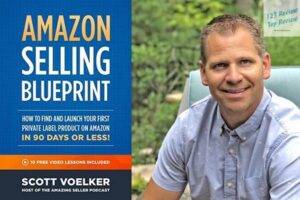Achieving financial independence and building lasting wealth can often seem like a complex and daunting task. However, JL Collins, through his book “The Simple Path to Wealth,” demystifies this process with straightforward advice and a practical approach. This book has become a cornerstone for those pursuing financial freedom, offering a roadmap that is both accessible and effective.
In this article, 123 Review will explore the key concepts presented by Collins, diving deeper into the strategies and mindset shifts necessary for securing a prosperous financial future.
Understanding Financial Independence
Importance of Financial Independence
Financial independence is the ability to live comfortably off the income generated by your investments, without relying on a paycheck. It’s more than just having a significant amount of money—it’s about reclaiming your time and freedom. JL Collins argues that achieving financial independence should be a primary goal for everyone, as it provides the ultimate form of security and autonomy.

With financial independence, you’re no longer tethered to a job out of necessity. This freedom allows you to make life choices based on your values and desires rather than being driven by financial obligations. Whether it’s retiring early, traveling the world, pursuing a passion project, or simply spending more time with loved ones, financial independence opens up a world of possibilities that are often constrained by financial worries.
Cultivating a Mindset for Wealth
One of the key takeaways from Collins’ book is the importance of cultivating a mindset conducive to wealth-building. This mindset isn’t about obsessing over money but understanding its role as a tool to achieve your life goals. Collins emphasizes that wealth is built through consistent, disciplined actions over time, rather than through get-rich-quick schemes or sudden windfalls.
A wealth-building mindset requires patience, resilience, and a long-term perspective. It involves making smart financial decisions daily, such as living below your means, saving a significant portion of your income, and investing wisely. By focusing on the bigger picture and staying the course, even when faced with market volatility or economic downturns, you can steadily progress towards financial independence.
The Role of Frugality in Wealth Building
Frugality is often misunderstood as simply cutting costs, but Collins redefines it as the conscious allocation of resources towards what truly matters. In “The Simple Path to Wealth,” frugality is portrayed not as deprivation, but as a means of directing your money towards activities and purchases that align with your values and financial goals.
Living below your means is a critical aspect of this approach. By minimizing unnecessary expenses and avoiding lifestyle inflation (the tendency to increase spending as income rises), you can free up more money to invest. Collins advocates for a lifestyle where you consciously spend less than you earn, thereby increasing your savings rate—a crucial factor in accumulating wealth. This doesn’t mean you forgo all pleasures, but rather that you prioritize long-term financial security over short-term gratification.
Investment Strategies
Advantages of Low-Cost Index Funds
When it comes to investing, Collins is a staunch advocate of low-cost index funds. These funds are designed to mirror the performance of a specific market index, such as the S&P 500, by holding a portfolio of the same stocks in that index. The primary advantages of index funds include broad market exposure, diversification, and low fees.
Collins explains that because index funds simply aim to match the market rather than outperform it, they come with much lower management fees compared to actively managed funds. Over time, these lower costs can translate into significantly higher returns for investors. By investing in index funds, you essentially put your money in the hands of the market, which, historically, has shown a tendency to grow over the long term. This approach simplifies investing, reduces risk, and aligns with the principles of long-term wealth accumulation.
Long-Term Investing vs. Short-Term Trading
One of the biggest mistakes new investors make is attempting to beat the market through short-term trading. Collins advises against this approach, highlighting that it is often driven by speculation and can lead to significant losses. Instead, he champions a long-term investing strategy, where the focus is on buying and holding assets that are expected to appreciate over time.
Long-term investing takes advantage of the natural growth of the market, which, despite short-term fluctuations, tends to trend upwards over extended periods. This strategy not only minimizes the risk associated with market timing but also allows the power of compound interest to work in your favor. Collins encourages investors to adopt a “set it and forget it” mentality, where they regularly invest in a diversified portfolio and resist the urge to react to short-term market movements.
The Impact of Market Timing on Investment Success
Market timing—the practice of trying to predict the best times to buy and sell investments—can be tempting, especially during periods of market volatility. However, Collins warns that even seasoned investors struggle to time the market accurately. Attempting to do so can lead to buying high and selling low, the exact opposite of a successful investment strategy.
Collins emphasizes that consistently contributing to your investments, regardless of market conditions, is a more effective strategy than trying to time the market. This approach, known as dollar-cost averaging, involves investing a fixed amount at regular intervals. By doing so, you buy more shares when prices are low and fewer when prices are high, averaging out your cost over time. This method reduces the impact of market volatility on your investment portfolio and helps you avoid the pitfalls of emotional decision-making.
Debt Management
Types of Debt to Avoid
Debt can be a significant obstacle to achieving financial independence, particularly high-interest debt, which can quickly snowball into an unmanageable burden. Collins strongly advises against taking on debt that doesn’t contribute to your long-term financial well-being, such as credit card debt or loans for depreciating assets like cars.
High-interest debt is especially dangerous because it can rapidly accumulate, leaving you in a cycle of payments that hinder your ability to save and invest. Collins recommends avoiding consumer debt altogether and suggests that if you must take on debt, it should be for appreciating assets like real estate or education, which can provide a return on investment.
Strategies for Paying Off Debt
For those already in debt, Collins provides practical strategies for paying it off efficiently. Two popular methods are the debt snowball and debt avalanche strategies. The debt snowball method involves paying off your smallest debts first, regardless of interest rates. This approach can provide psychological momentum as you see balances disappearing, encouraging you to tackle larger debts.
The debt avalanche method, on the other hand, focuses on paying off the debt with the highest interest rate first, which makes the most financial sense in terms of minimizing the amount paid over time. Both methods require discipline and a commitment to using extra funds to reduce debt rather than for discretionary spending. Collins suggests choosing the method that best aligns with your personality and motivation style to ensure success.
The Psychological Effects of Debt on Financial Freedom
Debt doesn’t just impact your finances—it can also have profound psychological effects. Collins discusses how debt can lead to stress, anxiety, and even depression, creating a sense of being trapped or overwhelmed. These feelings can inhibit your ability to make clear, rational financial decisions, perpetuating the cycle of debt.
Eliminating debt, therefore, is not just a financial goal but a mental and emotional one as well. Freeing yourself from debt can provide a significant sense of relief and empowerment, allowing you to focus on building wealth and achieving financial independence. It restores a sense of control over your financial future, enabling you to make choices that align with your long-term goals rather than being dictated by financial obligations.
Compounding and Wealth Growth
The Power of Compound Interest
One of the most powerful concepts in wealth building is compound interest. As Albert Einstein reportedly called it, “the eighth wonder of the world,” compound interest allows your investments to grow exponentially over time. Collins explains that compound interest occurs when your earnings generate additional earnings, creating a snowball effect that accelerates wealth accumulation.
The key to harnessing the power of compound interest is to start investing as early as possible and to reinvest your earnings rather than withdrawing them. The longer your money is invested, the more opportunities it has to compound. This is why Collins emphasizes the importance of time in the market rather than timing the market. Even modest investments can grow into substantial sums given enough time and the power of compounding.
Strategies for Maximizing Returns
Maximizing returns involves more than just picking the right investments; it requires a strategic approach to minimize costs and manage risk. Collins advises focusing on low-cost investments, such as index funds, which offer the best opportunity for returns after accounting for fees. High fees can significantly erode your investment gains over time, so keeping costs low is essential for maximizing your wealth.
In addition to minimizing fees, diversification is another critical strategy. By spreading your investments across different asset classes and sectors, you reduce the risk that a poor performance in one area will significantly impact your overall portfolio. Collins also stresses the importance of maintaining a long-term perspective, avoiding the temptation to chase short-term gains, and sticking to your investment plan through market ups and downs.
Time as a Factor in Wealth Accumulation
Time is one of the most critical factors in the wealth accumulation process. The earlier you start investing, the more time your money has to grow through the power of compounding. Collins points out that even small amounts invested early can grow significantly over decades, making time one of your greatest allies in building wealth.
However, it’s not just about starting early—it’s also about staying invested. Collins encourages a long-term approach, where you consistently contribute to your investments and resist the urge to pull out during market downturns. By staying the course, you give your investments the time they need to recover and grow, ultimately leading to substantial wealth accumulation.
Wealth Preservation Techniques
The 4% Withdrawal Rule
Once you’ve built your wealth and achieved financial independence, the next challenge is preserving it throughout your retirement. The 4% withdrawal rule is a commonly recommended strategy for this purpose. It suggests that you can withdraw 4% of your retirement savings each year, adjusted for inflation, without depleting your funds too quickly.
Collins endorses this rule as a simple yet effective guideline for ensuring your money lasts through your retirement. By withdrawing only 4% annually, you allow the remaining balance of your investments to continue growing, which helps sustain your income over the long term. This approach provides a balance between enjoying your retirement and maintaining financial security.
Risk Management in Retirement Investing
As you approach retirement, managing risk becomes increasingly important. Collins advises gradually shifting your asset allocation from more volatile investments, such as stocks, to safer, income-generating assets like bonds. This transition helps protect your portfolio from significant losses that could jeopardize your retirement plans.
Risk management also involves regularly reviewing your financial situation and adjusting your investment strategy as needed. This could mean further diversifying your portfolio or increasing your cash reserves to cover unexpected expenses. By proactively managing risk, you can preserve your wealth and ensure that it lasts throughout your retirement years.
Adjusting Asset Allocation Over Time
Asset allocation—the mix of stocks, bonds, and other investments in your portfolio—should evolve as you move through different stages of life. Collins suggests that while a more aggressive, stock-heavy portfolio may be appropriate in your younger years, it’s wise to gradually shift towards a more conservative allocation as you approach retirement.
This adjustment helps mitigate the impact of market volatility on your retirement savings, providing more stability and reducing the risk of significant losses. However, even in retirement, Collins advises against becoming too conservative, as some exposure to stocks is necessary to ensure your portfolio continues to grow and outpace inflation. Finding the right balance is key to maintaining financial security in retirement.
Practical Steps for Beginners
Setting Up Your Investment Accounts
For those new to investing, Collins offers clear and actionable steps to get started. The first step is setting up the right investment accounts, such as a Roth IRA or 401(k), depending on your individual circumstances. These accounts offer tax advantages that can significantly enhance your investment returns over time.
Collins emphasizes the importance of understanding the tax implications of each type of account. For example, a Roth IRA allows your investments to grow tax-free, and withdrawals in retirement are also tax-free, making it an excellent option for long-term savings. A 401(k), on the other hand, offers tax-deferred growth, meaning you pay taxes when you withdraw the money in retirement, which can be beneficial if you expect to be in a lower tax bracket at that time.
Setting up automatic contributions is another critical step. By automating your savings, you ensure that you consistently invest a portion of your income, reducing the temptation to spend that money elsewhere. This disciplined approach is essential for building a substantial investment portfolio over time.
Building and Diversifying a Portfolio
Once your accounts are set up, the next step is building a diversified investment portfolio. Diversification involves spreading your investments across different asset classes—such as stocks, bonds, and real estate—to reduce risk and increase the potential for returns. Collins advises beginners to focus on broad-based index funds, which provide exposure to a wide range of assets and are inherently diversified.
Collins suggests that a simple portfolio of just a few index funds can provide sufficient diversification while being easy to manage. For example, you might invest in a total stock market index fund, a total international stock market index fund, and a bond index fund. This combination offers exposure to both domestic and international markets as well as the stability of bonds, creating a balanced portfolio that can weather market fluctuations.
Monitoring and Adjusting Your Financial Plan
Building wealth isn’t a one-time effort; it requires ongoing attention and adjustments. Collins advises regularly monitoring your financial plan to ensure you stay on track towards your goals. This involves reviewing your investments periodically, rebalancing your portfolio to maintain your desired asset allocation, and increasing your contributions as your income grows.
Rebalancing is particularly important as it ensures that your portfolio remains aligned with your risk tolerance and investment goals. Over time, certain investments may perform better than others, causing your asset allocation to shift. By rebalancing, you can sell a portion of the overperforming assets and buy more of the underperforming ones, maintaining your desired allocation.
In addition to rebalancing, Collins encourages staying informed about changes in the financial markets and adjusting your strategy as needed. This doesn’t mean reacting to every market movement but rather staying aware of broader trends that might affect your long-term financial plan. By being proactive and making necessary adjustments, you can continue progressing towards financial independence and ensure that your wealth-building efforts are successful.
Conclusion
“The Simple Path to Wealth” by JL Collins is more than just a guide to investing; it’s a comprehensive approach to achieving financial independence and securing your financial future. Through a combination of frugality, disciplined investing, debt management, and smart wealth preservation techniques, Collins provides a clear and actionable roadmap for anyone looking to take control of their finances.
By focusing on long-term goals, cultivating a wealth-building mindset, and adhering to the principles outlined in the book, you can build a solid financial foundation that supports a life of freedom and security. Whether you’re just starting your financial journey or looking to refine your strategy, the lessons from “The Simple Path to Wealth” offer invaluable insights that can help you achieve lasting prosperity.





